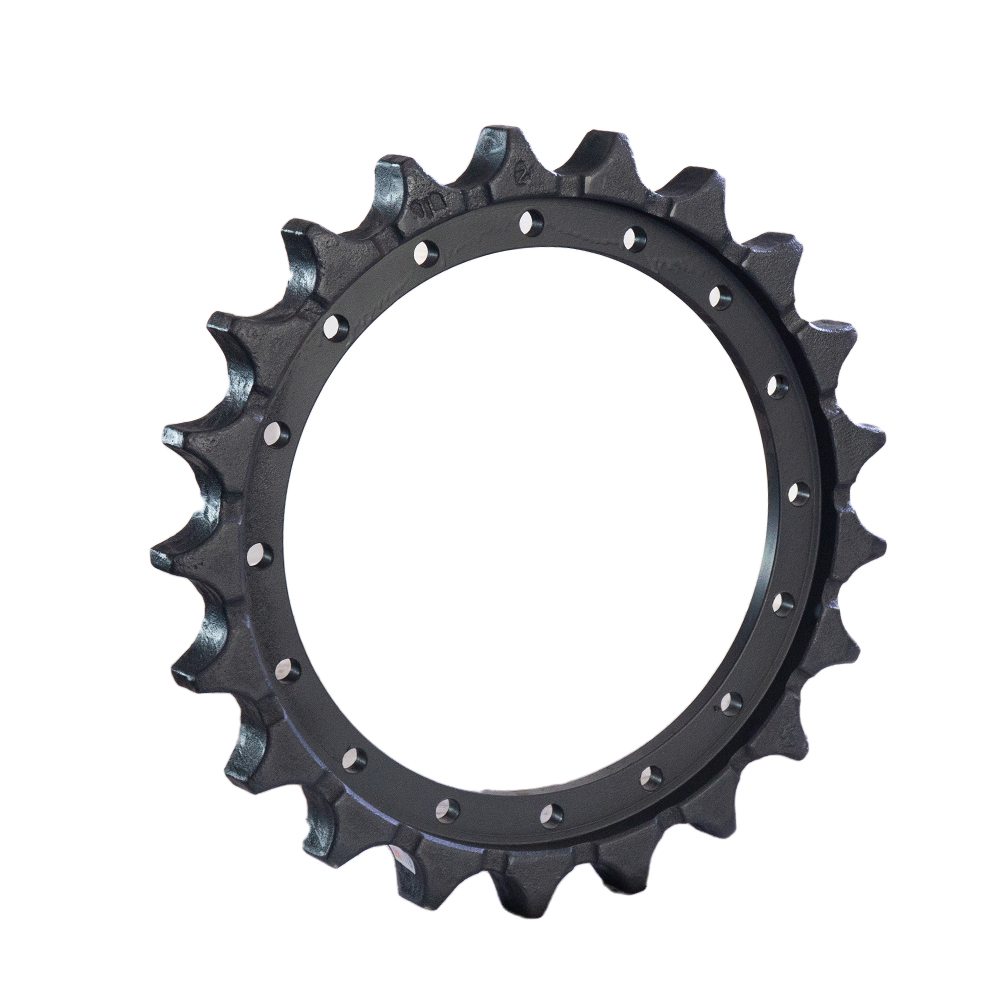Misalignment in the undercarriage of an excavator can cause excessive wear and damage to the sprocket and other components, as well as reduced performance and efficiency.
Here are some common causes of misalignment and how they can be addressed:
Worn or damaged components: Worn or damaged components, such as track links, rollers, or idlers, can cause misalignment in the undercarriage. These components should be inspected regularly and replaced as needed.
Improper track tension: If the track tension is too loose or too tight, this can cause misalignment in the undercarriage. Adjust the track tension to the manufacturer’s recommended specifications.
Uneven ground conditions: Working on uneven or sloped ground can cause misalignment in the undercarriage. Avoid operating the excavator on steep slopes or unstable ground, and use caution when operating on uneven terrain.
Improper installation: If the undercarriage components are not installed properly, this can cause misalignment. Make sure all components are installed correctly and according to the manufacturer’s instructions.
Overloading: Overloading the excavator can cause excessive stress on the undercarriage and lead to misalignment. Avoid overloading the excavator and follow the manufacturer’s recommended weight limits.
If you suspect that your excavator’s undercarriage is misaligned, it’s important to address the issue promptly to prevent further damage and improve performance. Consult the manufacturer’s instructions or a qualified technician for guidance on how to address misalignment and other undercarriage issues. Regular maintenance and inspection of the undercarriage can also help prevent misalignment and other issues from occurring.
Can you provide more information on how to inspect and maintain the undercarriage?
Here are some general guidelines for inspecting and maintaining the undercarriage of an excavator:
Regularly clean the undercarriage: Dirt, debris, and other contaminants can cause excessive wear and damage to the undercarriage components. Regularly clean the undercarriage with a pressure washer or other appropriate cleaning tool.
Inspect the undercarriage components: Regularly inspect the undercarriage components, including the sprocket, track links, rollers, and idlers, CATERPILLAR CAT320 Excavator Undercarriage Part Sprocekt manufacturer for signs of wear, damage, or misalignment. Look for cracks, chips, or other visible damage, and check for loose or missing bolts.
Check the track tension: Check the track tension regularly and adjust it as needed to the manufacturer’s recommended specifications. Improper track tension can cause misalignment and excessive wear to the undercarriage components.
Lubricate the undercarriage components: Proper lubrication can help reduce friction and wear on the undercarriage components. Follow the manufacturer’s recommended lubrication schedule and use a high-quality lubricant.
Address issues promptly: If you notice any signs of wear, damage, or misalignment in the undercarriage components, address the issue promptly. Replace worn or damaged components and realign the undercarriage as needed to prevent further damage and improve performance.
Keep accurate records: Keep accurate records of all maintenance and inspection activities, including the date, time, and type of maintenance performed. This can help you identify patterns and trends in undercarriage performance and make informed decisions about future maintenance and repairs.
By following these general guidelines and the manufacturer’s specific instructions for your excavator, you can help ensure that the undercarriage is properly maintained and operating at peak performance. Regular maintenance and inspection can also help extend the life of your excavator and prevent costly downtime.
